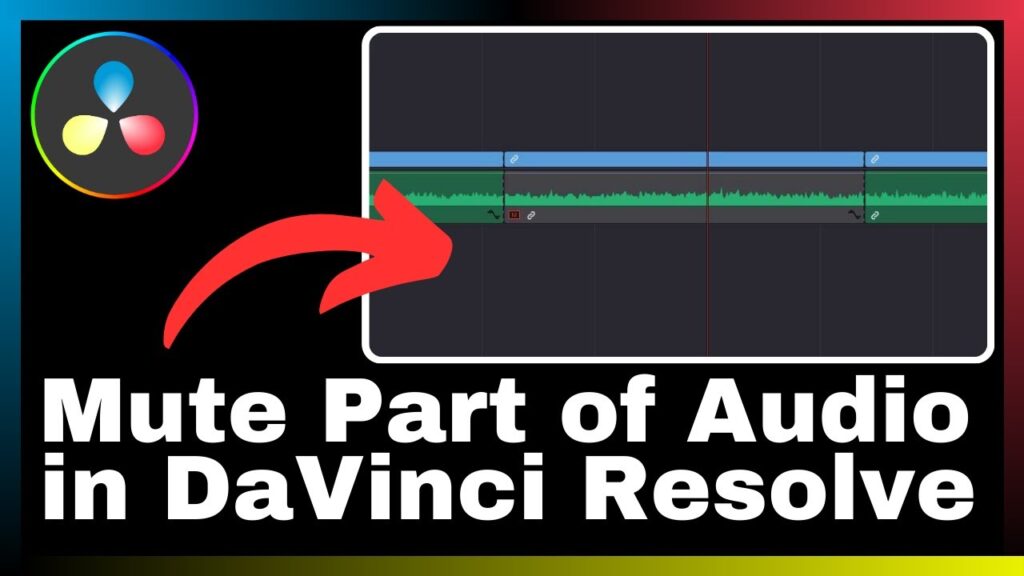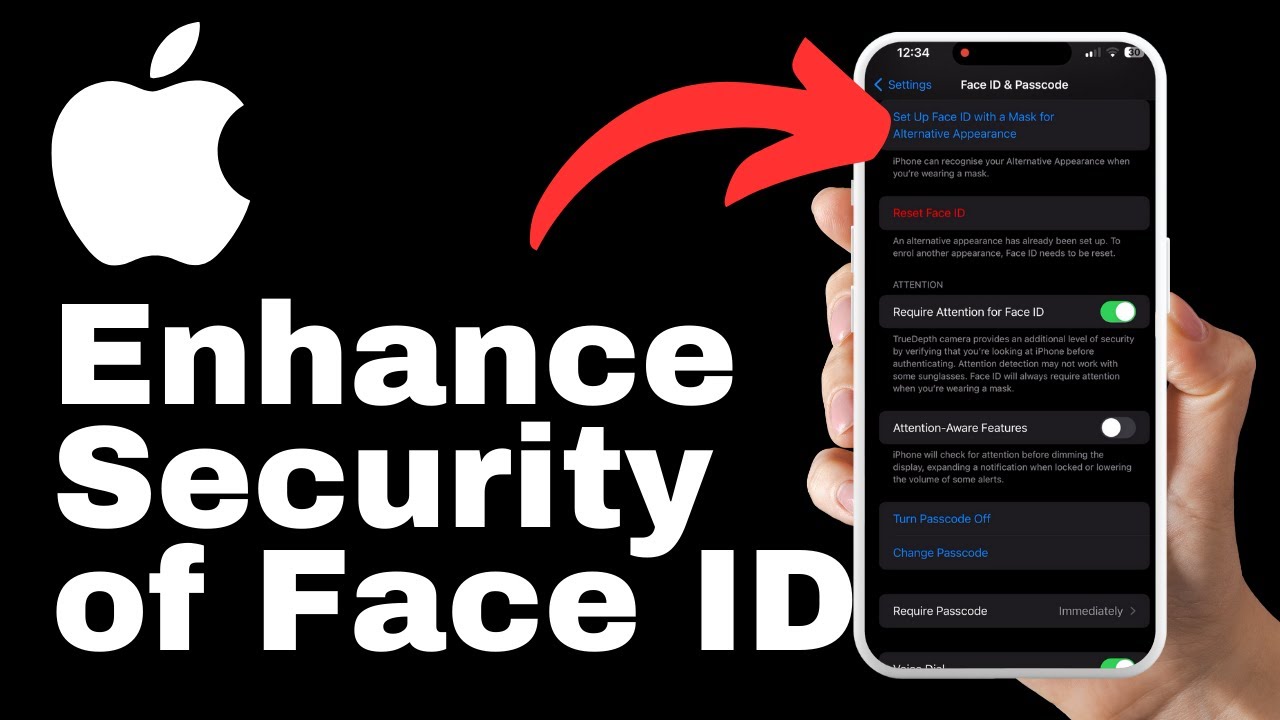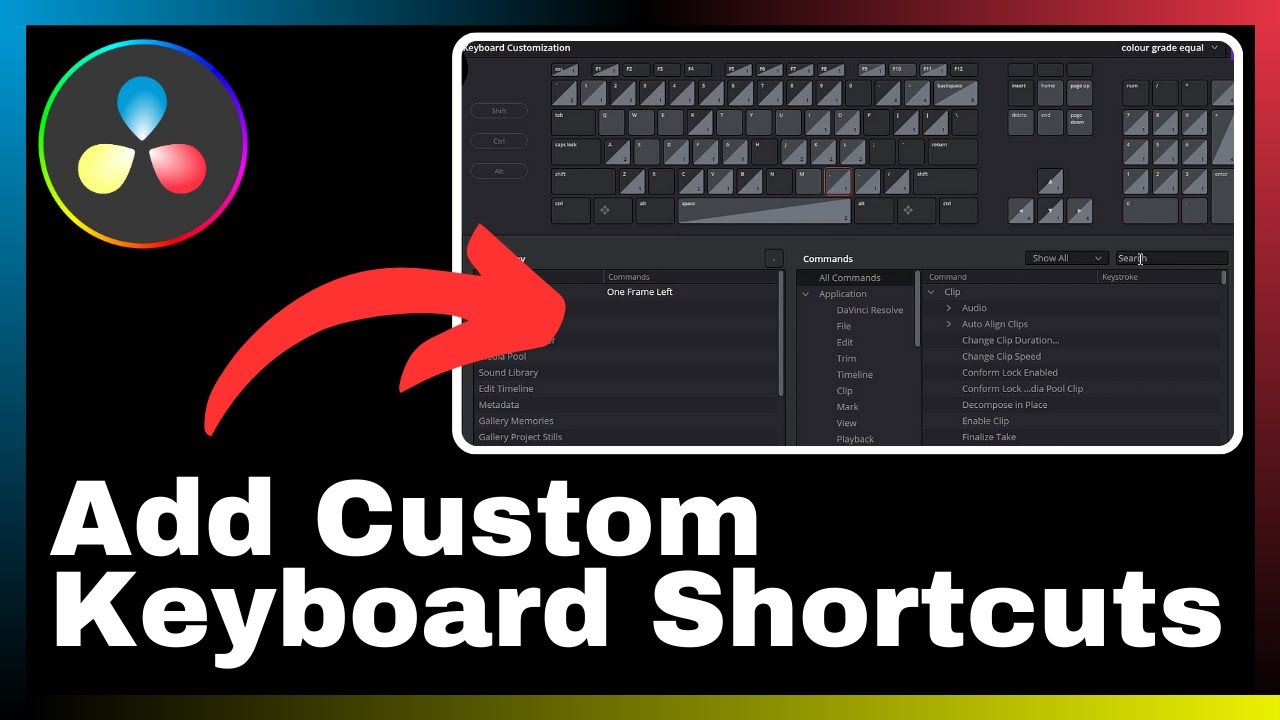In “How to Mute Part of Audio in DaVinci Resolve,” you will be guided through the process of effectively muting specific segments of audio in your videos using the popular editing software, DaVinci Resolve. This article aims to provide you with the necessary knowledge and skills to gain better control over your audio, enhancing the overall quality of your videos. Through step-by-step instructions and expert tips, you will learn how to easily mute unwanted audio sections and create a more polished and professional final product.
DaVinci Resolve is an all-in-one video editing, color correction, visual effects, and audio post-production software. It offers a comprehensive set of tools suitable for both professionals and beginners, making it a widely chosen option for various projects in terms of size and complexity. By following this guide, you will acquire valuable insights into using DaVinci Resolve to mute parts of your audio, enabling you to elevate the overall audio quality of your videos and delivering content that captivates your audience.

Understanding the Basics of DaVinci Resolve
About DaVinci Resolve
DaVinci Resolve is an all-in-one video editing, color correction, visual effects, and audio post-production software. It provides a comprehensive set of tools designed for both professionals and beginners, making it a popular choice for projects of all sizes and complexities. With its wide range of features and capabilities, DaVinci Resolve offers a powerful solution for video editors looking to achieve high-quality results.
The need for audio mute in videos
Audio muting is a crucial technique in video editing as it allows editors to selectively remove or mute certain segments of audio. This can be useful in various situations, such as removing background noise, unwanted dialogue, or sensitive information. By muting specific parts of audio, editors can enhance the overall audio quality and control the sound elements in their videos more effectively.
The unique features of DaVinci Resolve for audio muting
DaVinci Resolve offers several unique features that make audio muting a seamless process. One of its standout features is its advanced audio editing capabilities, which allow for precise control over audio elements. With DaVinci Resolve, you can easily select and mute specific segments of audio, adjust audio levels, and apply various effects to optimize the overall sound quality of your videos. These powerful tools make DaVinci Resolve a valuable asset for achieving professional audio muting results.
Installing and Setting up DaVinci Resolve
Steps to download DaVinci Resolve
To download DaVinci Resolve, follow these steps:
- Go to the official Blackmagic Design website.
- Navigate to the DaVinci Resolve product page.
- Click on the “Download” button.
- Choose the appropriate version for your operating system (Windows or macOS).
- Follow the on-screen prompts to complete the download.
System Requirements for installing DaVinci Resolve
Before installing DaVinci Resolve, ensure that your system meets the minimum requirements:
- Operating System: Windows 10 (64-bit) or macOS 10.15 (or later)
- Processor: Intel Core i7 or AMD Ryzen 7 or higher
- RAM: 16GB or more
- Graphics Card: NVIDIA GeForce GTX 1060 or AMD Radeon RX 570 or higher
- Storage: SSD with at least 512GB of free space
- Display: A resolution of at least 1920 x 1080
It is essential to meet these requirements to ensure optimal performance and stability while using DaVinci Resolve.
Basic Setup after installation
After installing DaVinci Resolve, perform the following basic setup:
- Launch DaVinci Resolve.
- Create a new project or open an existing one.
- Familiarize yourself with the user interface and layout.
- Import any media files, including audio, that you will be working with in your project.
- Configure your audio preferences, such as the sample rate, bit depth, and audio output settings.
- Set up your workspace by arranging the different panels to suit your editing needs.
By completing these basic setup steps, you’ll be ready to start working on your audio editing projects in DaVinci Resolve.
Understanding the User Interface of DaVinci Resolve
Overview of DaVinci Resolve user interface
DaVinci Resolve features a user-friendly interface that is designed to streamline the editing process. The user interface consists of various panels and windows that provide access to different tools and functions within the software. Understanding the layout and functionality of each panel is essential for efficient navigation and effective audio editing in DaVinci Resolve.
Understanding the different panels and their functions
The user interface of DaVinci Resolve includes the following panels:
-
Media Pool: This panel is used for organizing and managing media assets, including audio files.
-
Edit: The Edit panel is where you can assemble your timeline, arrange clips, and perform basic editing tasks.
-
Fusion: The Fusion panel allows for advanced visual effects and motion graphics creation.
-
Color: The Color panel provides comprehensive color grading tools for enhancing the visual aesthetics of your videos.
-
Fairlight: The Fairlight panel is dedicated to audio editing and post-production, offering a wide range of features for controlling and manipulating audio elements.
-
Deliver: The Deliver panel enables you to export and deliver your finalized projects in various formats and resolutions.
Each panel serves a specific purpose and contributes to the overall editing experience in DaVinci Resolve. Learning how to navigate and utilize these panels effectively will significantly enhance your audio editing workflow.
Importing Audio Files into DaVinci Resolve
Steps to import audio
To import audio files into DaVinci Resolve, follow these steps:
- Open your project in DaVinci Resolve.
- In the Media Pool panel, navigate to the folder where your audio files are stored.
- Right-click within the Media Pool and select “Import Media.”
- Browse to the location of your audio files and select the files you want to import.
- Click “Import” to add the selected audio files to your project.
By following these steps, you can easily import audio files into your DaVinci Resolve project for editing and post-production purposes.
Selecting the desired audio for editing
Once you import your audio files into DaVinci Resolve, you can select the desired audio for editing by simply clicking on the audio file in the Media Pool or the timeline.
Organizing your audio files
DaVinci Resolve provides various options for organizing your audio files within the software. You can create custom bins or folders to categorize your audio files based on specific criteria, such as type, location, or purpose. This organizational feature enables you to efficiently manage your audio assets and access them quickly during the editing process.
Understanding the Features of Audio Editing
Overview of DaVinci Resolve’s audio editing capabilities
DaVinci Resolve offers a comprehensive set of audio editing capabilities that allow you to manipulate and enhance the audio elements in your videos. Some of the key features of DaVinci Resolve’s audio editing capabilities include:
-
Clip trimming: DaVinci Resolve enables precise trimming of audio clips, allowing you to remove unwanted sections or adjust the duration of specific segments.
-
Fade in/out: You can easily apply fade-in and fade-out effects to your audio clips to create smooth transitions and eliminate abrupt audio changes.
-
Volume adjustment: DaVinci Resolve provides intuitive tools for adjusting the volume levels of your audio clips, allowing you to achieve the desired audio balance.
-
Effects and plugins: The software offers a wide range of audio effects and plugins that can be applied to your audio clips to enhance the overall sound quality and create unique auditory experiences.
Different sections in the audio editing panel
The audio editing panel in DaVinci Resolve is known as the Fairlight panel and is divided into several sections:
-
Timeline: This section displays the audio tracks and allows you to arrange and edit them.
-
Mixer: The Mixer section provides controls for adjusting individual track levels, panning, and applying various audio effects.
-
EQ and Dynamics: These sections offer advanced tools for equalizing and compressing audio for optimal sound quality.
-
Metadata and Markers: In this section, you can add metadata and markers to your audio clips for easier organization and navigation.
By familiarizing yourself with the different sections of the audio editing panel, you can effectively utilize the features and tools available for audio editing in DaVinci Resolve.
The Process of Muting Audio in DaVinci Resolve
Selecting the segment of audio to mute
To mute a specific segment of audio in DaVinci Resolve, follow these steps:
- In the timeline, locate the portion of the audio you want to mute.
- Click and drag over the desired segment to select it.
Using the audio muting tools
After selecting the segment of audio to mute, you can use the audio muting tools in DaVinci Resolve to mute the selected portion. These tools are located in the Fairlight panel and include options such as a dedicated mute button or a mute key command.
Completing the audio muting process
Once you have used the audio muting tools to silence the selected segment of audio, review the result to ensure that the desired portion is muted. You can play back the audio and make any necessary adjustments until you achieve the desired audio muting effect.
Adjusting the Audio Levels in DaVinci Resolve
How to adjust audio levels
To adjust the audio levels in DaVinci Resolve, follow these steps:
- In the timeline, locate the audio clip or track you want to adjust.
- Select the clip or track by clicking on it.
- In the Mixer section of the Fairlight panel, adjust the level controls to increase or decrease the volume as needed.
How adjustments can help in better audio control
By adjusting the audio levels in DaVinci Resolve, you can achieve better audio control and balance. This allows you to ensure that the audio elements in your videos are clear, consistent, and appropriately synchronized with the visuals. Proper audio level adjustments can significantly improve the overall quality and impact of your videos.
Tips and tricks for optimizing audio levels
Here are some tips and tricks for optimizing audio levels in DaVinci Resolve:
-
Use audio waveforms: Visualize the audio waveforms in the timeline to identify areas of high or low audio levels and make precise adjustments accordingly.
-
Utilize keyframes: Create keyframes to dynamically adjust the audio levels at specific points in the timeline. This technique is particularly useful for audio transitions or emphasizing certain parts of the audio.
-
Use reference audio: Import a reference audio file with a known and balanced audio level to compare and match the levels of your other audio clips.
By applying these tips and tricks, you can ensure optimal audio levels in your videos, resulting in a better audio experience for your audience.
Exporting the Edited Audio in DaVinci Resolve
Exporting your project after audio editing
To export your project after audio editing in DaVinci Resolve, follow these steps:
- In the Deliver panel, select the desired output format and settings for your exported audio.
- Customize any additional export options, such as file name, destination folder, and quality settings.
- Click on the “Render” button to initiate the export process.
- Wait for the export to complete, and your edited audio will be saved as a separate file in the designated location.
Choosing the appropriate file format for exporting
When choosing the file format for exporting your edited audio in DaVinci Resolve, consider the intended use and distribution of the audio file. If the audio is for personal use or further editing, a lossless format such as WAV or FLAC may be suitable. For online sharing or playback purposes, formats like MP3 or AAC are widely compatible and offer good quality.
Best practices for exporting
To ensure the best results when exporting your edited audio in DaVinci Resolve, consider the following best practices:
-
Double-check your export settings: Review and confirm that all export settings, such as sample rate, bit depth, and file format, are correctly configured.
-
Monitor the export process: Keep an eye on the progress of the export to ensure there are no errors or interruptions. This will help avoid any issues with the exported audio file.
-
Save a backup copy: Once the export is complete, make a backup copy of the exported audio file to prevent data loss or accidental overwriting.
By following these best practices, you can ensure that your exported audio from DaVinci Resolve is of the highest quality and meets your specific requirements.
Common Problems and Fixes while Muting Audio in DaVinci Resolve
Troubleshooting audio muting issues
If you encounter issues while muting audio in DaVinci Resolve, consider the following troubleshooting steps:
-
Check the selection: Ensure that you have properly selected the segment of audio you want to mute. Verify that the selection encompasses the desired section.
-
Verify muting settings: Double-check your audio muting settings, such as the mute button or key command, to ensure they are correctly applied.
-
Check for overlapping clips: Verify if there are overlapping clips on the timeline that may be affecting the audio muting. Adjust the clips’ positions to avoid conflicts.
Tips to avoid common problems
To avoid common problems while muting audio in DaVinci Resolve, keep the following tips in mind:
-
Plan your audio edits: Have a clear plan and vision for which sections of the audio you want to mute. By pre-planning, you can streamline the editing process and reduce the likelihood of errors.
-
Practice selection precision: Take your time when selecting the portion of audio to mute. Ensure that the selection is accurate and precisely encompasses the desired segment.
-
Regularly save your progress: Save your project regularly to avoid any potential loss of work due to software crashes or other unforeseen circumstances.
Where to find help if you can’t resolve the issues
If you are unable to resolve audio muting issues in DaVinci Resolve on your own, consider seeking help from the following sources:
-
Online forums and communities: Engage with fellow DaVinci Resolve users on dedicated forums and communities to seek assistance and advice.
-
Official documentation: Refer to the official DaVinci Resolve documentation, which provides detailed information about various features and troubleshooting techniques.
-
Professional support: Consider reaching out to the official support channels provided by DaVinci Resolve for direct assistance from their support team.
Conclusion
Recap of the steps and processes involved in audio muting in DaVinci Resolve
In this article, we have explored the basics of DaVinci Resolve and its unique features for audio muting. We have covered the installation and setup process, the user interface, importing audio files, audio editing capabilities, audio muting process, adjusting audio levels, exporting edited audio, common problems and fixes, and the importance of mastering audio muting techniques.
By following the step-by-step instructions and understanding the functionality of DaVinci Resolve, you can effectively mute specific segments of audio in your videos. Remember to utilize the various tools and features offered by DaVinci Resolve to achieve optimal audio control and produce high-quality videos.
Importance of mastering audio muting technique for video editors
Mastering audio muting techniques is crucial for video editors as it allows you to selectively remove or mute certain segments of audio to enhance the overall audio quality and control the sound elements in your videos effectively. By honing this skill and utilizing the advanced features of DaVinci Resolve, you can take your video editing capabilities to the next level and produce professional-quality videos with exceptional audio.


























